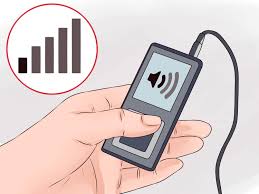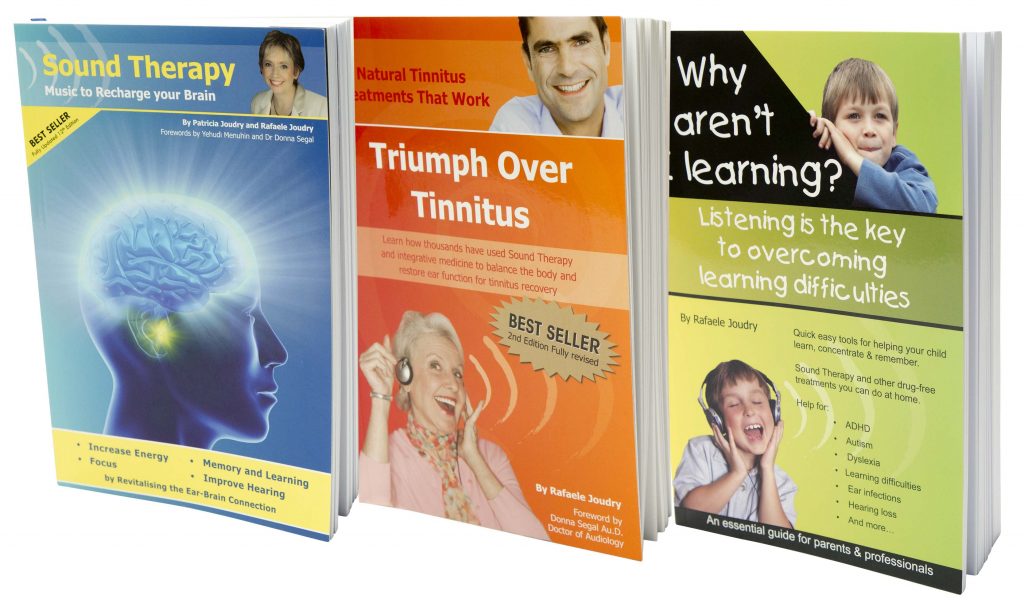10.1 How to Use the Program
How to use the Client Supervision forms
You will receive a pack of Client Feedback Forms with each program you purchase.
These forms are to be given to the client with the program.
As a Sound Therapy SYNERGY Consultant you provide a most important personal touch to your clients’ Sound Therapy experience. What people need most, particularly in a healing situation, is recognition and care from someone they trust.
The client folder that comes with each program provides a structure to help you easily give the care and supervision clients need. However, as we know many practitioners are very busy, we have structured this follow up so that you can determine how labour intensive it will be for you. In some cases, simply having a form to send back to you will assure the client that someone is keeping track of their progress.
With each program you purchase, you will receive a client folder with the following documents:
- Letter (explaining to the client what their Consultant will do)
- Baseline Profile
- 2 weeks checklist
- 3 months progress summary
Give this folder to your client when they buy the program.

You can also find on the SYNERGY website, in the section called “Client Assessment and Support Tools”, a set of questionnaires for your own follow up with the client.
It is your choice to:
- Schedule follow up interviews
- Do telephone interviews
- Or simply have the client return the forms to you by mail or email.
You will choose the option that best suits your practice or your clients’ needs.
The benefits of this follow up system are:
- It links the client specifically to you so that they will come to you for any future support or additional purchases.
- The client understands they are receiving a clinically supported program.
- Any difficulties in the early stages of listening will be addressed at the appropriate time.
You are free to charge for the consultations if you wish, and to combine them with another treatment. If you practice other modalities which will improve the client’s general health, a course of supportive treatment will enhance their Sound Therapy results.
How to put your clients into the Listener Support Program

Put all your clients into our email Listener Support Programs to ensure they get the regular encouragement they need.
When your client has purchased a program, go to the LSP SYNERGY link found on the SYNERGY site under Client Assessment and Support Tools, and simply enter your client’s details. This will ensure that they get the three month email Listener Support Program for the product they have purchased. The emails will be automatically sent by head office, but will encourage them to go back to their SYNERGY Consultant for any advice or follow up.
In this way we help to reinforce the client’s relationship to you. As long as you remain a SYNERGY Consultant we will not market directly to your client, so that any future purchases will only be offered by you.
This regular email contact has proven very effective in helping to motivate and inform listeners so that they get the best results.
The program will also send a reminder email to you, after three months, to recommend you contact your client and see if they would like to purchase the next level of Sound Therapy.
How long must I listen?

About three hours per day for adults. More can be done if desired, depending on the listening routine found in the workbook.

For adults it is generally a minimum of three hours a day for six weeks to three months. This can be broken up into different sessions during the day or night and does not have to be continuous in one block.
Start by filling in the Personal Listening Routine Assessment in the Workbook.
The filtering on the albums must be introduced to the ear gradually, just as if you went to the gym you would not start with the heaviest weights on day one.
To gradually build up the responsiveness of the ear requires a program consisting of six hours of music. This also avoids the problem of your becoming so tired of one album that you never want to hear it again.
How long must children listen?

About 30 to 60 minutes per day, depending on the age of the child.
Half an hour to an hour a day for six weeks to three months. For younger children half an hour may be enough whereas for older children an hour is recommended. If a child likes the program and wants to listen more, this is likely to bring on the benefits faster. Some children love to sleep with the Sound Therapy playing.
We have found that in order for the therapy to be effective, the variety and the gradual filtering are essential.
The addition of the stories, which are unique to the Joudry program, assists with language development and adds a great deal of interest to the program for children.

How much time does it take out of the day to do Sound Therapy?

Sound Therapy is done during other activities so it takes no time out of your day.
About two minutes, to turn on the player, choose your album, put on the headphones, press play, and occasionally plug it in to recharge the battery.
Tomatis always recommended that listeners do other activities during listening when they came in for treatment in the clinic. Therefore it takes no time to do Sound Therapy, as it simply accompanies you in your normal daily activities.
At first, people may be concerned when they hear that Sound Therapy listening is done for three hours per day. Getting them to grasp that it actually takes
no time out of your day to do Sound Therapy may require a bit of explaining. Sometimes the best way to communicate this is for clients to see you wearing it while you are speaking to them.
The brain can absorb the benefits of Sound Therapy in any state, whether awake, alert, or asleep. The best way for a listener to fit Sound Therapy into their life is to simply find an activity during which they like to listen and make this a daily habit.
What can you do while listening to Sound Therapy?

Anything except tennis or sex.
You can do just about any activity while listening to Sound Therapy. This includes: jogging, reading, studying, watching TV working on the computer, traveling or driving the car, having a conversation or even sleeping and going to school or work.
Listening during sleep is a great option once the client has reached the point in the program where they are using all four albums. Doing it earlier is not advised as the program would play right through, but they are not yet ready for albums three and four.
Many of us have used it during driving and found it helps us to stay alert. However, if you mention this, it is advisable say that you are not advising them to do this and it is at their own discretion, just to protect yourself form a liability claim.

What if it sounds irritating?

This is a sign that the brain is being rewired and indicates that positive benefits are about to occur.
Some listeners may find the program irritating at a certain stage. This is just an adjustment period. Once their ears gets used to the sound they will find it enjoyable and relaxing. Those who find it irritating at the start are the ones who probably need it the most.
The irritation is most likely a sign that the nervous system is having to adjust and reorganise itself in response to this new form of stimulation. Ultimately, the reorganisation will result in better, clearer thinking, overall coordination and a greater ability to multi-task.
Its making me too tired.

This is usually a good sign that the listener is on the way to experiencing an energy breakthrough.
Tiredness is an indication that the Sound Therapy is working. Its very important to persist through this period of tiredness to reach the energy break through that will follow. This is fully detailed in the Sound Therapy book, which describes Patricia Joudry’s experience of this process.
The tiredness doesn’t happen to everyone, but if it does happen it is a sure sign that the nervous system needs this stimulation, and a breakthrough of extra energy will follow.
The tiredness means that the brain and nervous system are being reorganised in a better way. Its like a department store that is having a makeover. Everything may seem a bit messy and out of whack for a while, but when the renovations are finished and the new store opens, suddenly the person will feel refreshed, revitalised, brand new and ready to take on the world.
The tiredness may last anywhere from a few hours to a few weeks. The listener just needs encouragement and reassurance during this period to keep going.
For some people it will be a single period of tiredness, followed by a dramatic energy breakthrough and that’s the end of it. For others the tiredness may come and go as recovery happens in stages. Whatever the pattern is, you can be assured that it is a good sign of beneficial reorganisation happening in the body.

I haven’t experienced the breakthrough.

While some people will have a definite “breakthrough”, for others, the changes are much more subtle. Everyone’s experience is different, as is explored in the book.
After reading the Sound Therapy books, some people may be looking for a particular experience which is described by some as a “breakthrough”, or an “opening of the ear.”
Some people will experience a period of distinct tiredness, followed by an energy break through. Others will not.
Some people may have a sensation of the ear opening and clearing (if they had chronic Eustachian tube dysfunction) but most will not have this.
In his early writing, Tomatis may have generalised to imply that everyone will have some kind of opening or breakthrough experience, and Patricia Joudry may have done the same. In fact there may always be an ‘opening’. However, for some the opening will be so subtle that it will not be noticed.
We now know that there is such great variation between people that a dramatic response cannot be assumed. For some the changes are truly life changing, for others they may be very subtle. Nevertheless, the benefits, when counted over a long period of time, for example many years, are still life-changing, even if it is simply that you sleep that little bit better.
How loud should it be?

The volume should never be too loud, as loud sound can damage the ear. As long as you can hear something, sometime of the time this is sufficient.
Sound Therapy should never be played too loud, just as we should protect our ears from any loud sound.
Because Sound Therapy is made up of mainly high frequency sounds, there may be a temptation, in a noisy environment, to turn it up loud to compete with background noise. This could be dangerous, as it would require very loud high frequency sound to overcome low frequency noise.
Sound Therapy should be played so that the volume is comfortable in a quiet room and allows the listener to have a conversation. They should never turn it up when they go into a noisy environment. If your client has hearing loss however, they can turn it up so that
they can hear at least some of the sound. They should not expect to hear every note, but to at least be able to hear something when played in a quiet room, if possible.
When sleeping, the volume should be set even lower than normal so as not to wake them up as they start to drift off.

Is it addictive?

Only in the positive sense that exercise or meditation is addictive.
Some people choose to use Sound Therapy for many years. We do not consider this an addiction, as it has no negative side affects or repercussions.
Some people like to listen for many hours every day or night, but this is not due to addiction, but simply wanting to get the most benefit they can from the therapy. There is no harm in doing this.
To be ‘addicted’ to Sound Therapy may be a good thing, as in being addicted to healthy food or exercise. But it is not something that creates negative withdrawal effects, like a drug, which is the true meaning of the word ‘addictive.’
What are the side effects?

There are no negative side effects, though there may be some temporary adjustment problems. These are covered in the Workbook.
Sound Therapy does not have ‘side effects’ in the true sense of the word, the way drugs do. Side effects are negative, detrimental effects which may occur as the result of a treatment and have to be tolerated in order to also get the benefits.
Being a natural therapy, Sound Therapy does not have any negative side effects.
However, there may be some temporary adjustment issues such as tiredness, pain in the ears or slight dizziness. Reassure your client that all of these things will generally pass quickly if they continue to listen.
Those who are familiar with natural therapies will know of the concept of a ‘healing crisis.’ This is where the body goes through a transformational healing process, where some symptoms seem to get worse at
first, but as the process follows through they will get better. If a client is going through this process it is important to reassure them that it is a positive process of healing, such as when you go to the gym and your muscles get sore at first, but as they recover from the soreness you know that they are stronger.
This is very similar to what may occur with Sound Therapy. It is also explained in some detail in the Workbook for the Level one program.
How will I know its working?

You will most likely notice a change in your sleep patterns or energy levels early on in the listening process.
New listeners will often notice an improvement in their sleep the first night. The energy breakthrough or improvement can take a few weeks or even months. It may be preceded by a period of tiredness, and it may occur suddenly or gradually.
Listeners may find that other people may notice that their attitude or their communication ability has improved even through the listener themselves may not even be aware of it. Change to conditions like hearing or tinnitus may occur in as little as two weeks or could take several months.
Even for those who don’t have clearly noticeable effects, they can be reassured that this intense, complex, richly harmonic stimulation must be creating a beneficial response in their nervous system, whether they consciously notice it or not.
Why must I read the book?

When you use our self-help Sound Therapy program you are becoming your own therapist. The book gives you the guidance you need to use the program correctly.
When a listener uses the self-help program, instead of going to see a Sound Therapist, they become their own therapist. To do this they need some background information so they will understand what to expect, what changes they may go through and be able to conduct their own program effectively.
The book gives them this information. It is like the manual for the self-help program. We have found that
if people undertake the listening without having read the book, they are usually not successful.

The Sound Therapy book is very easy to read and most people thoroughly enjoy it. For those who are too busy to read they can start by just reading chapter two of Sound Therapy: Music to Recharge Your Brain but have the rest to refer back to as needed.
Alternatively they can get the Talking Book and listen to it in the car. If the person is unable to read English then a family member can read one of the books and be available to advise them.
For parents and teachers of course Why Aren’t I Learning? will be more relevant. And those who want specific tinnitus information will also want to read Triumph Over Tinnitus.

